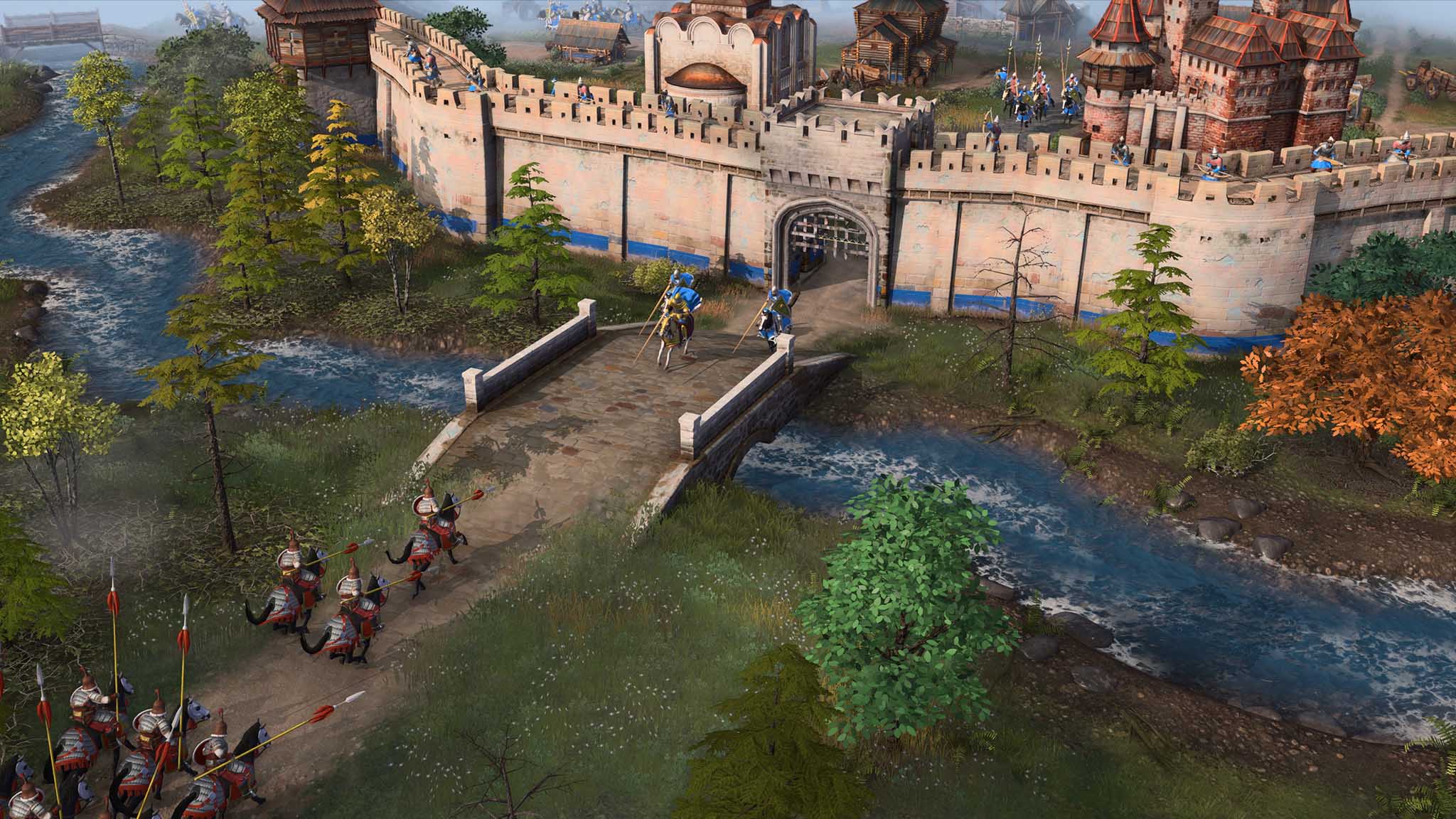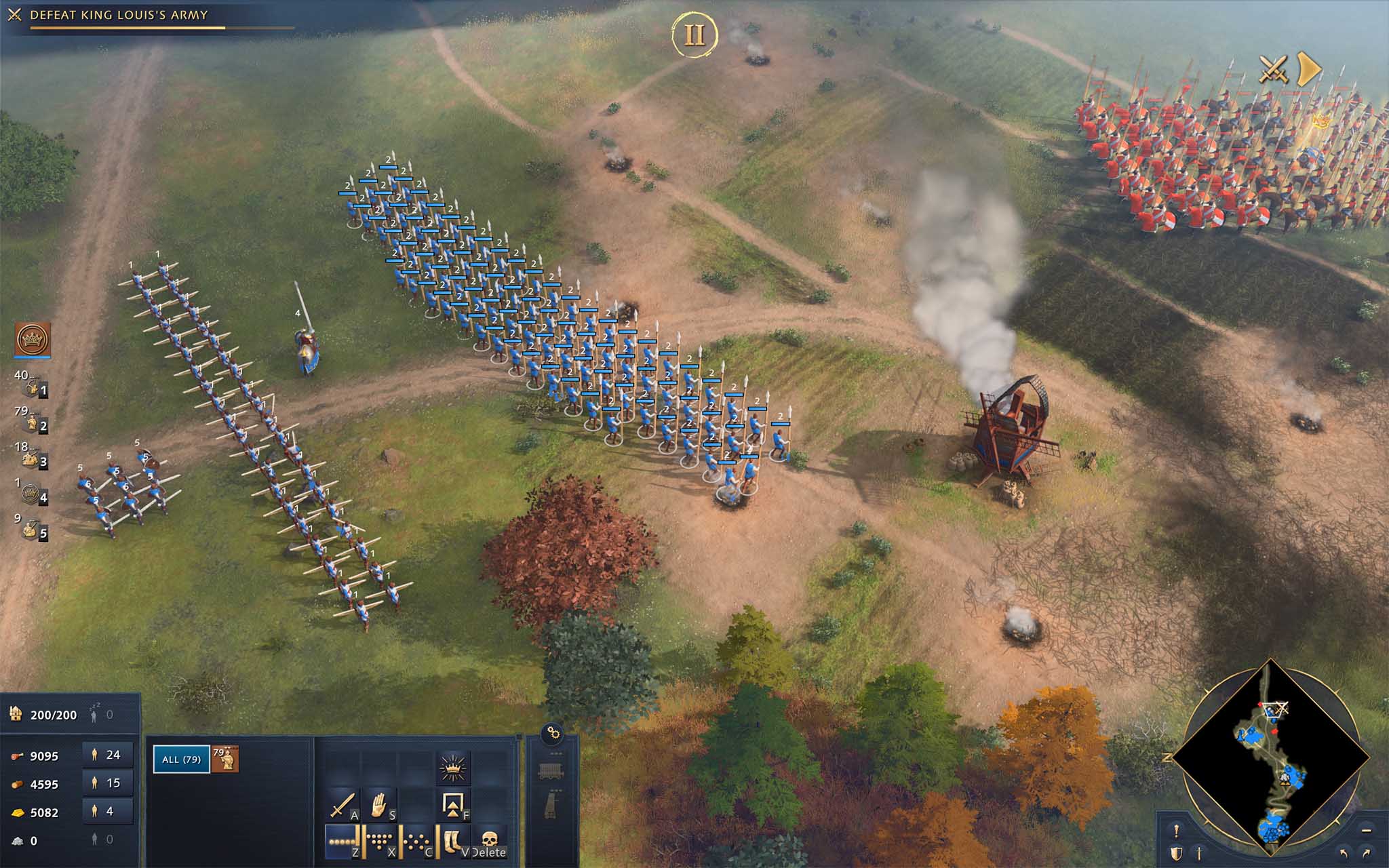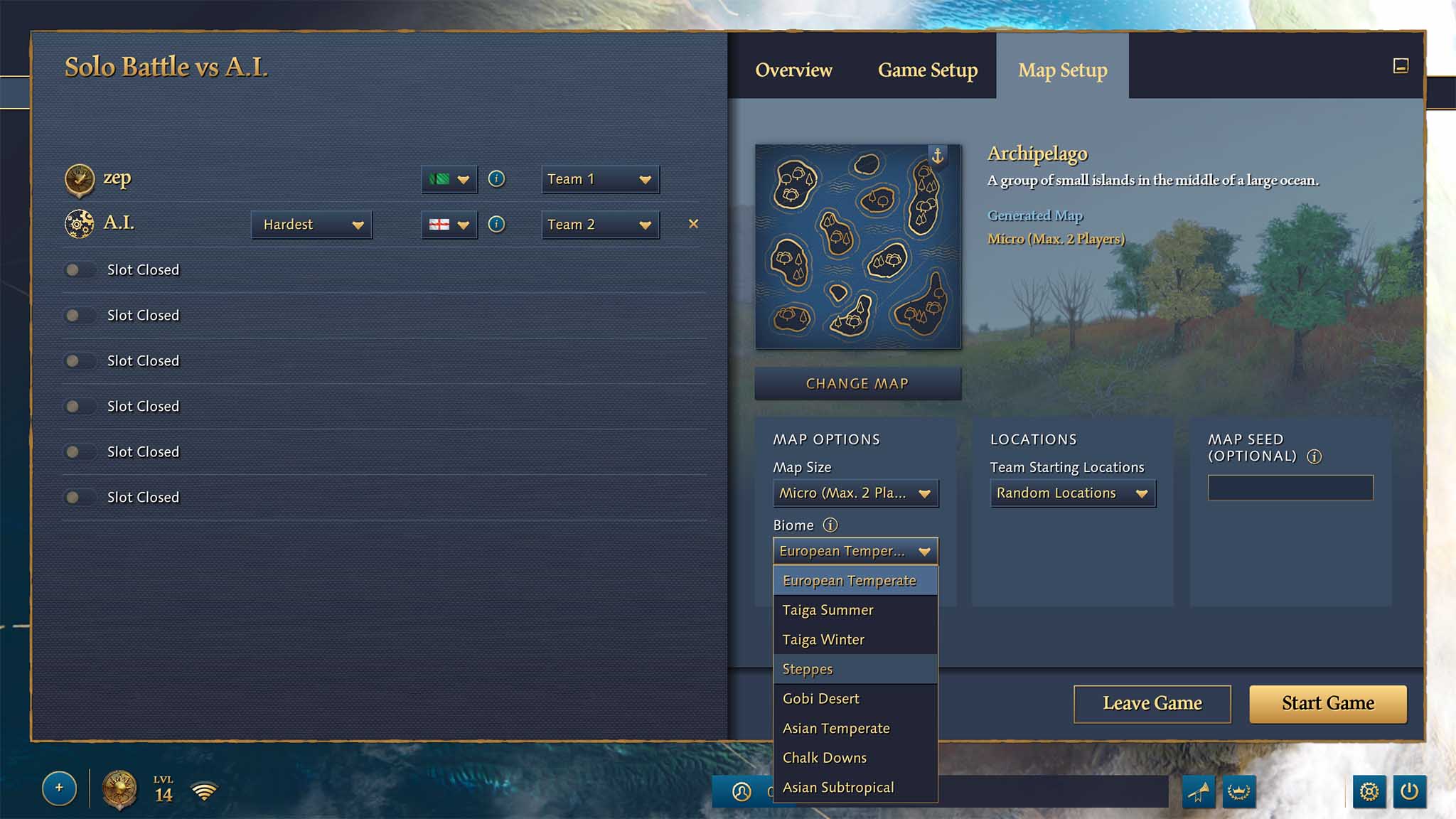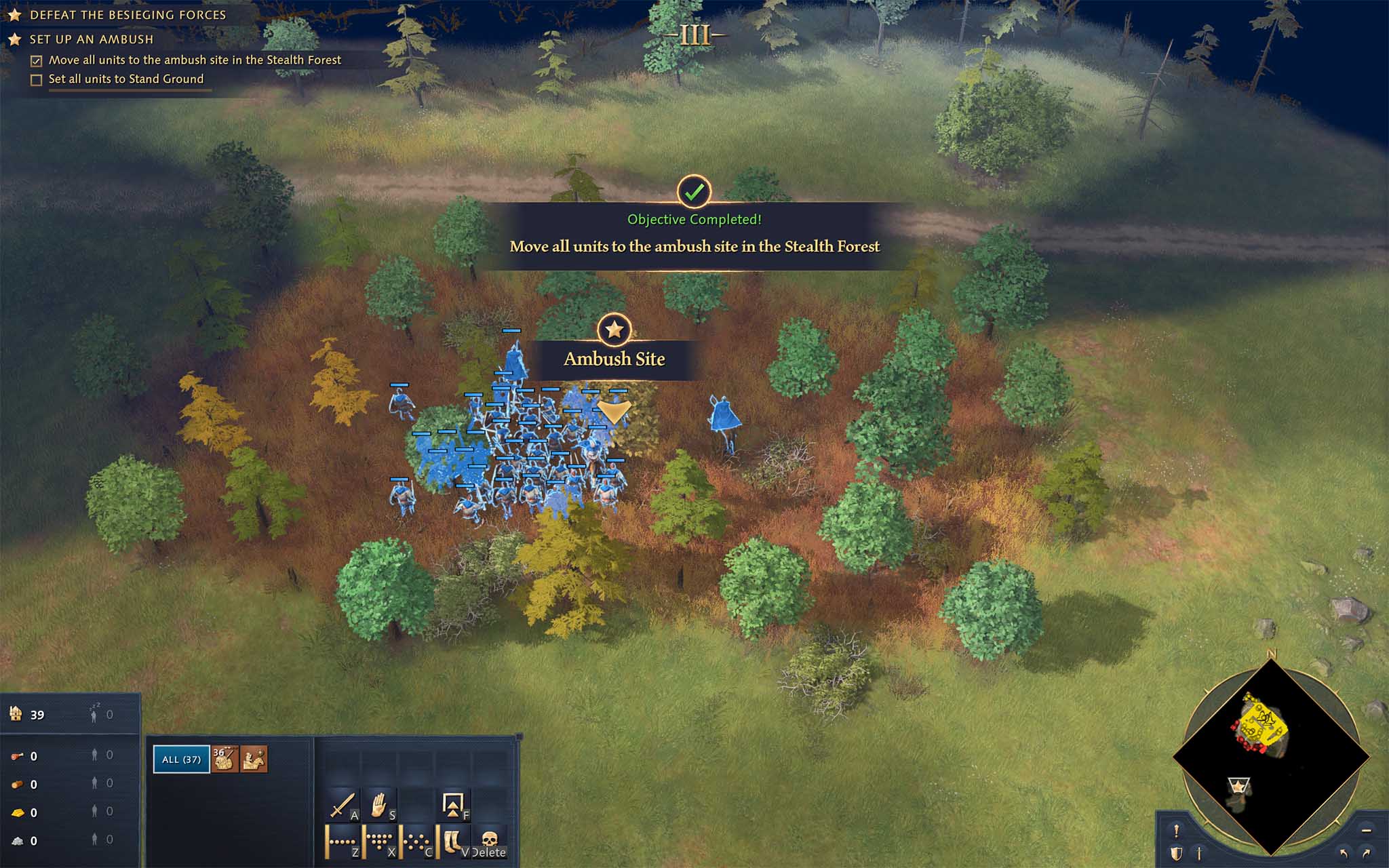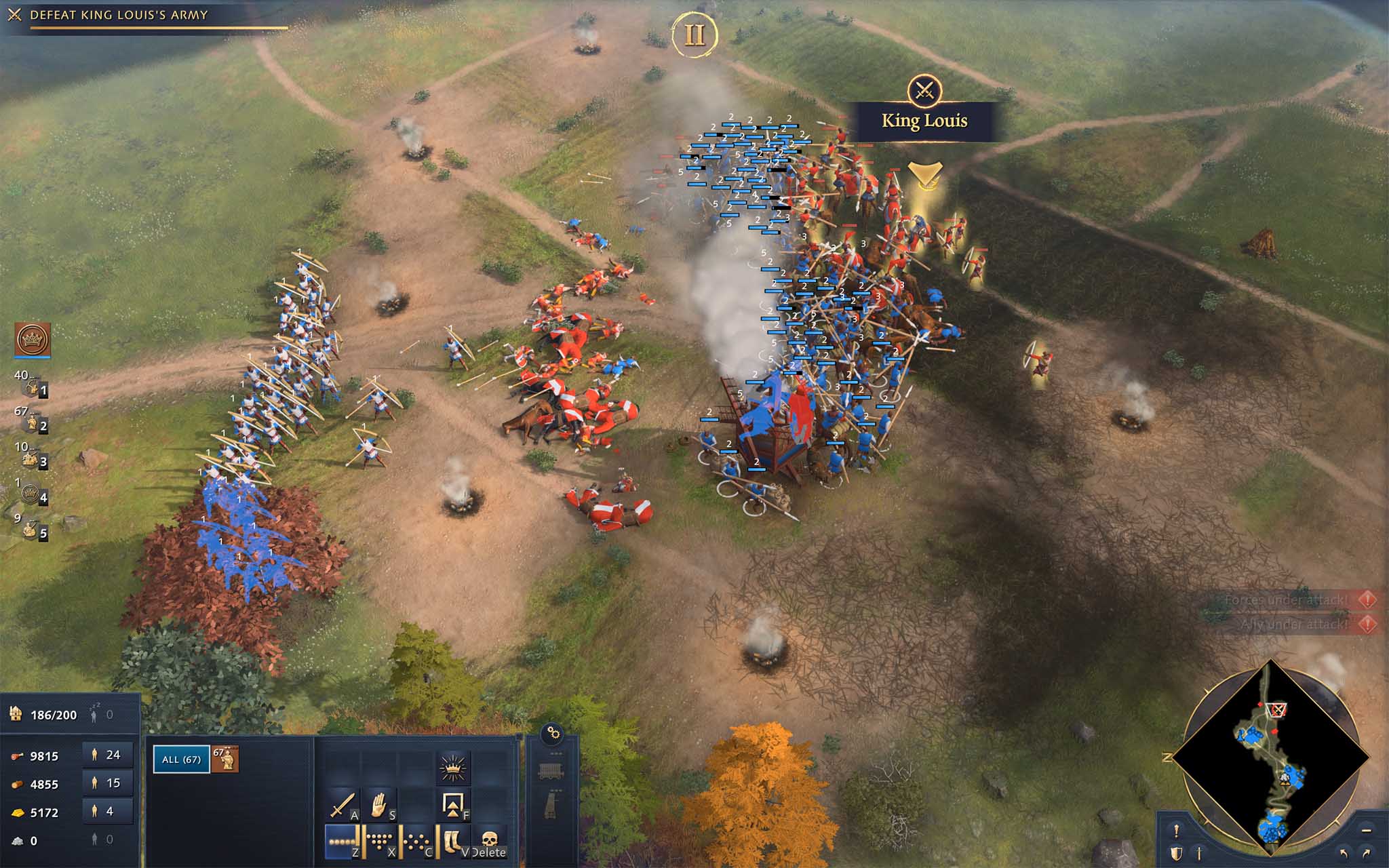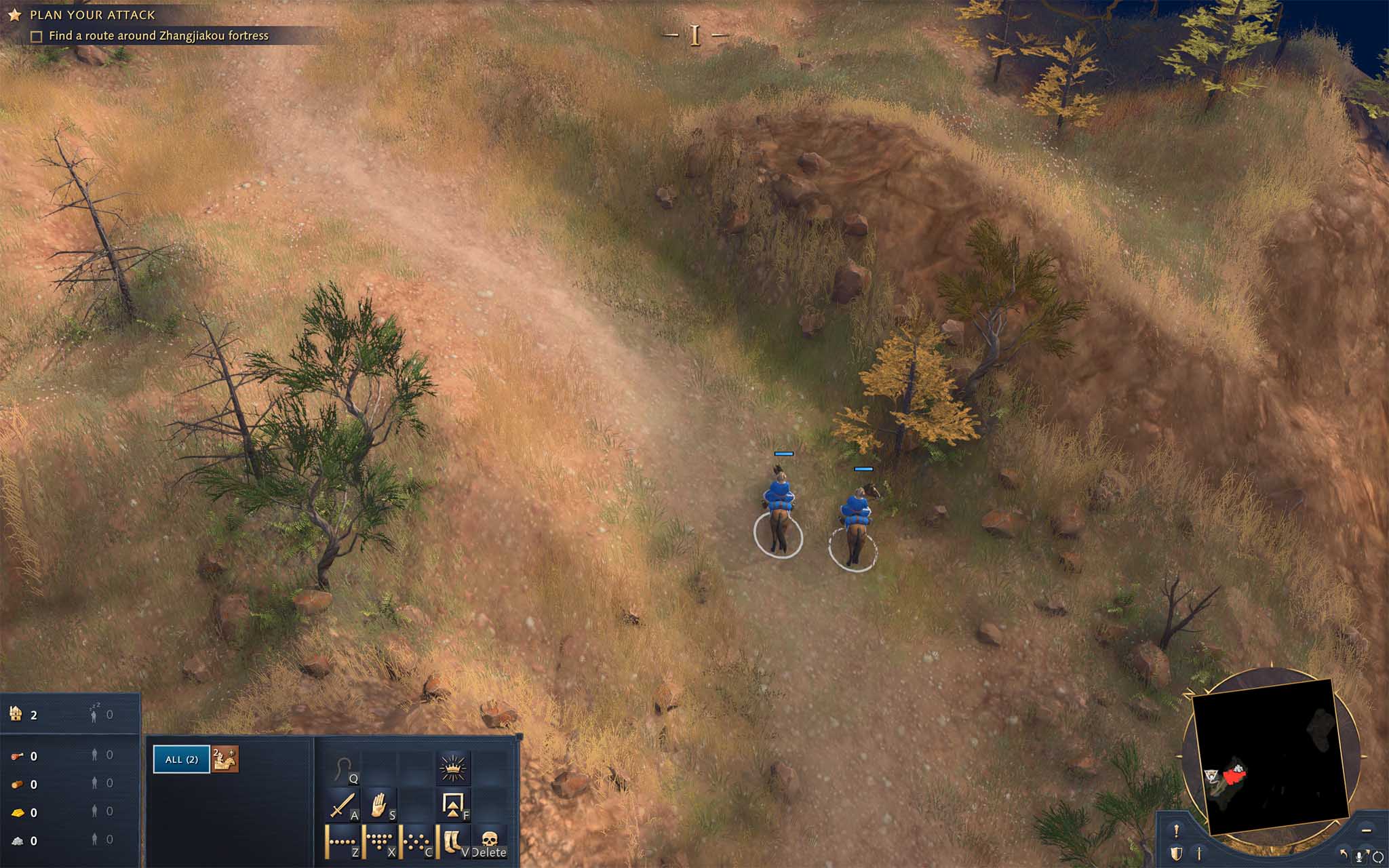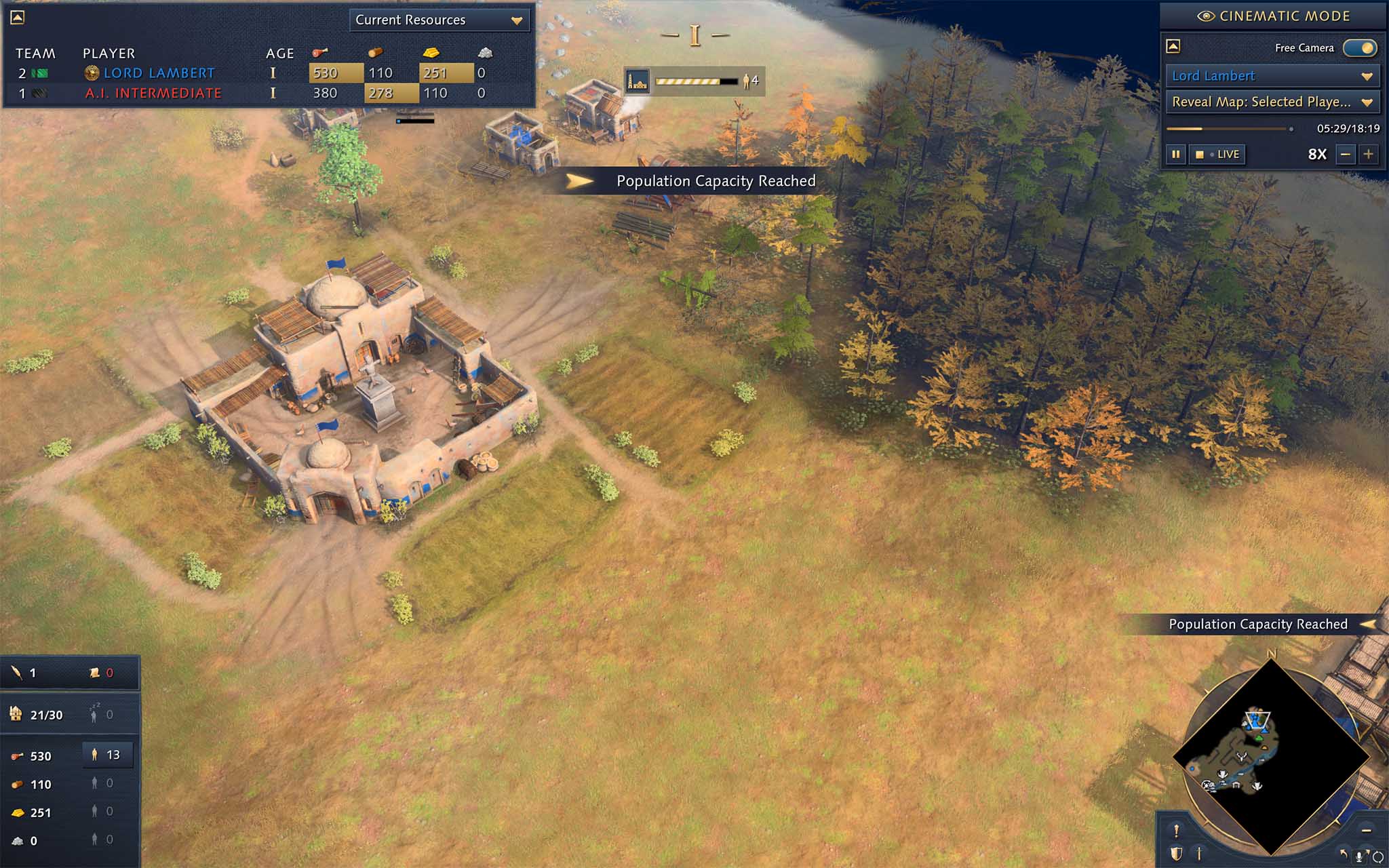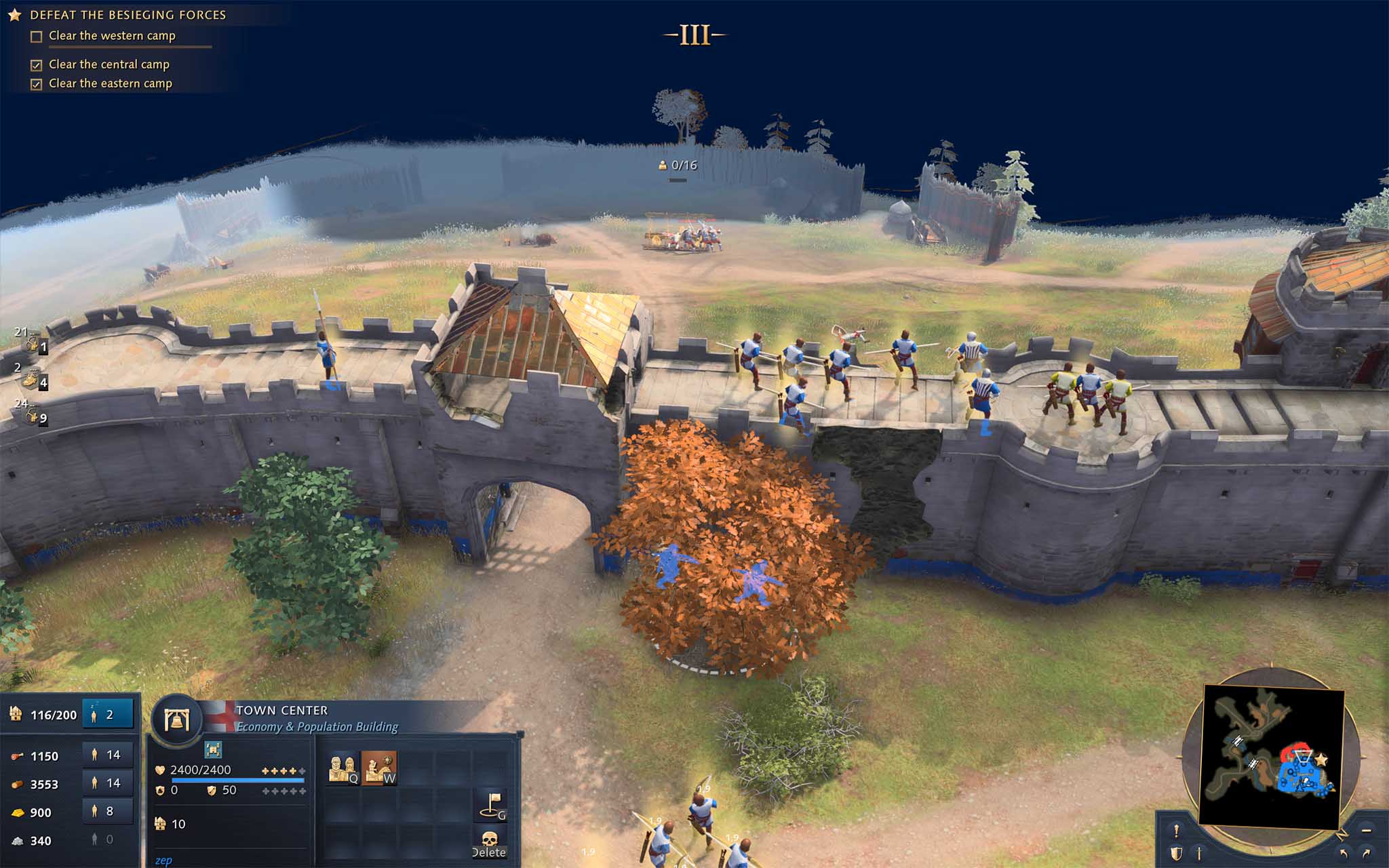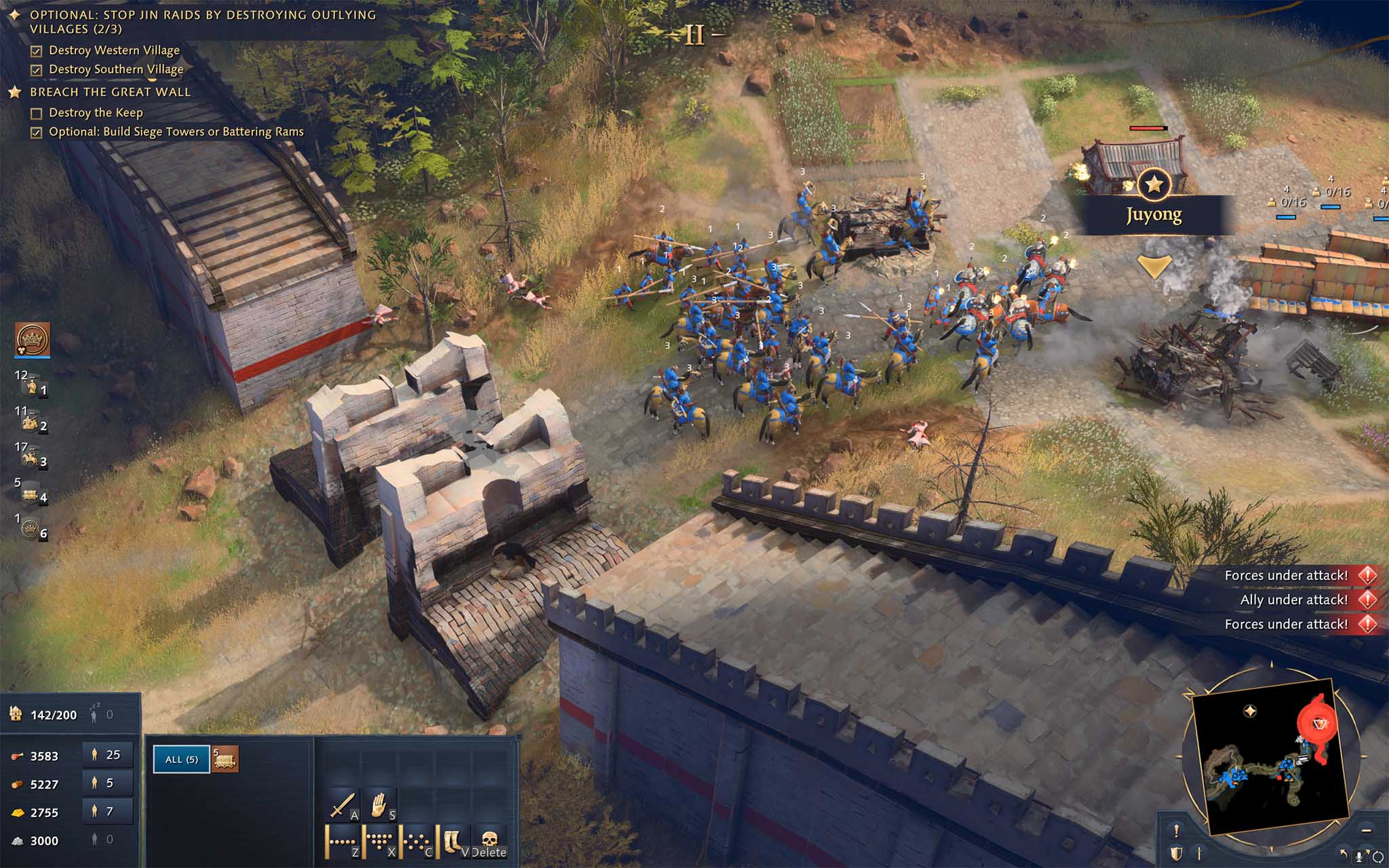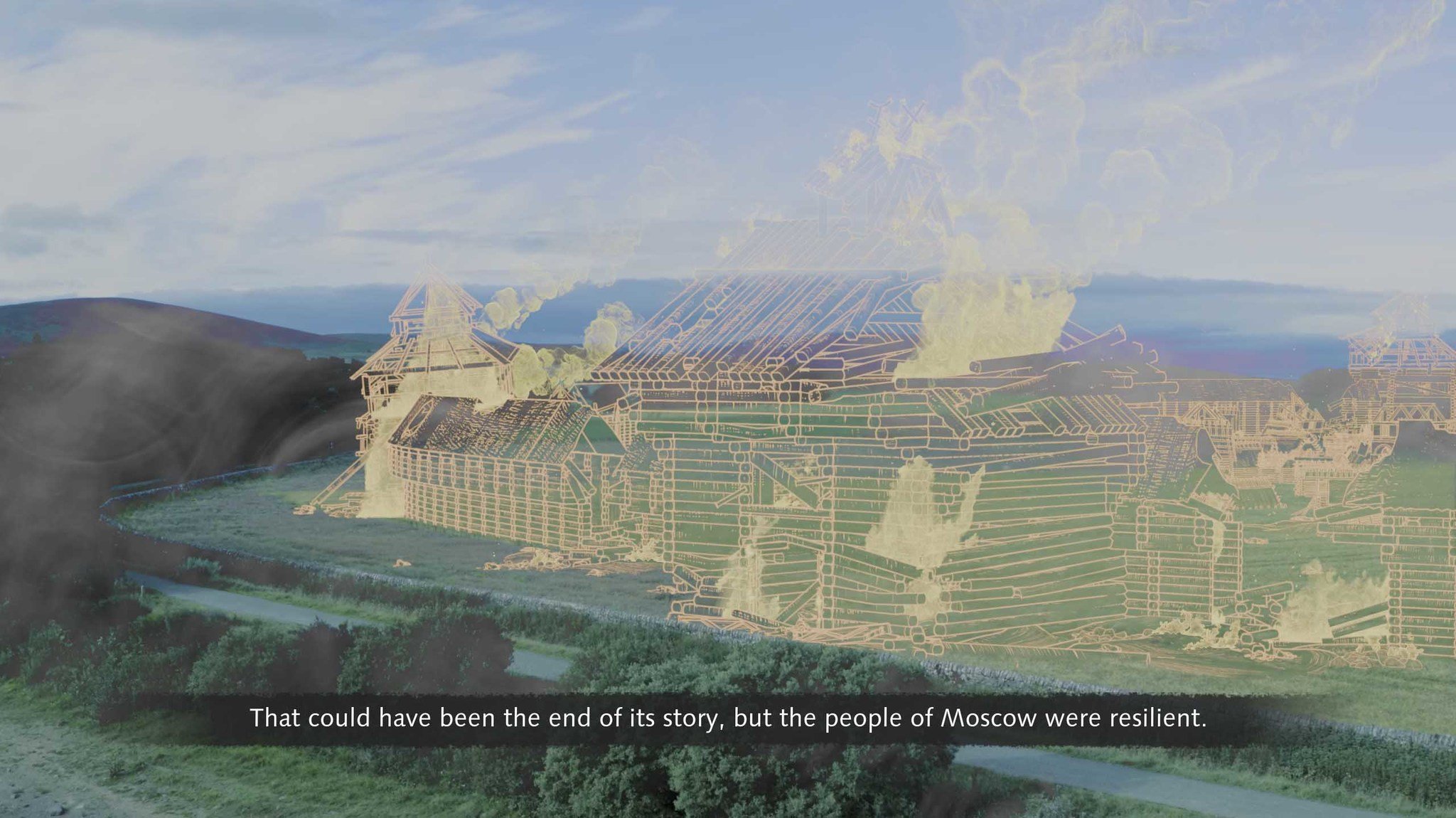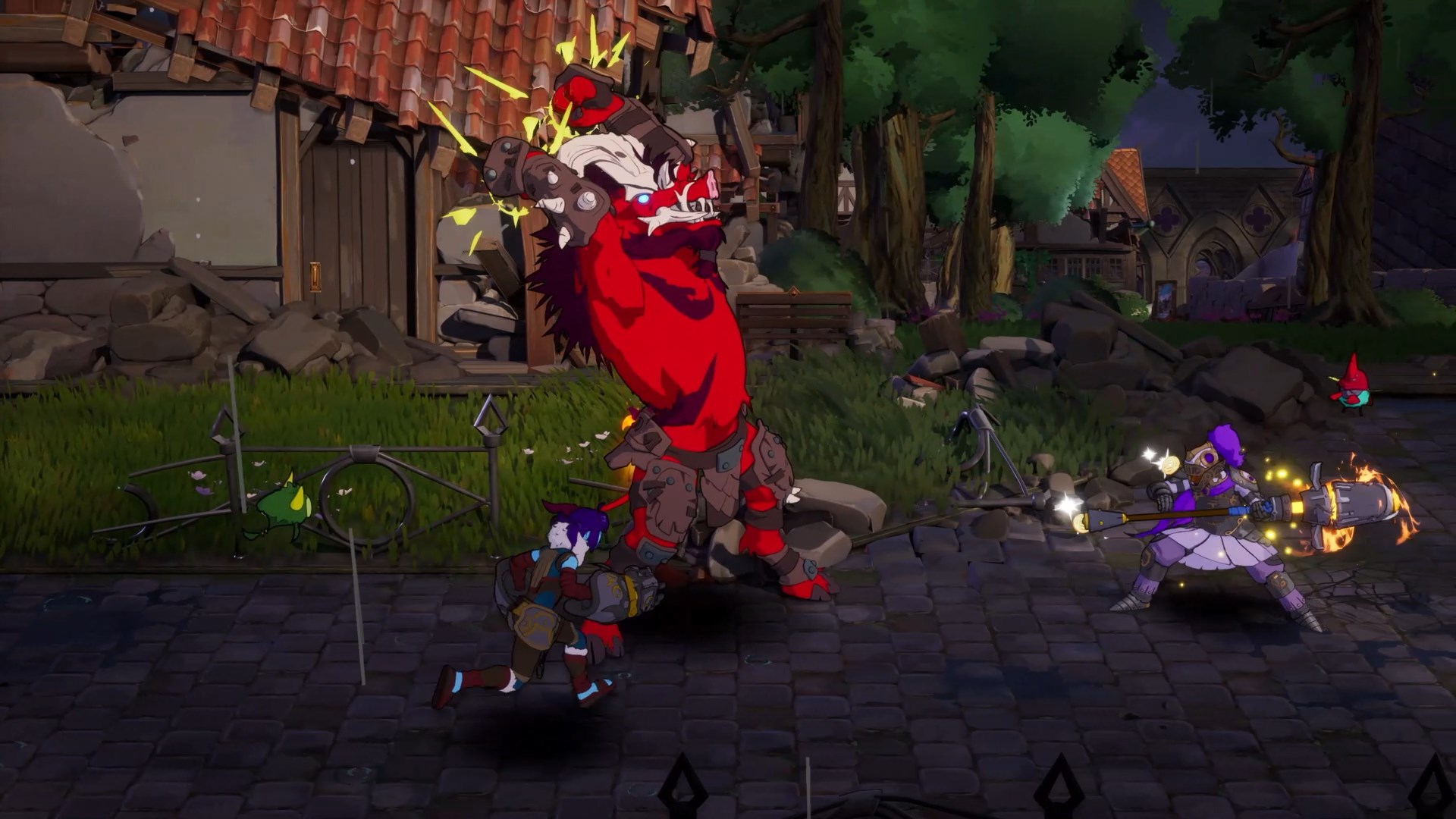Age of Empires 4 was announced on August 21, 2017, and ever since then, real-time strategy (RTS) fans have been eager to see where Microsoft, Xbox, and a talented cadre of developers would take the renowned series. I'm one of the lucky few who received early access to Age 4, and as I'm sitting down to write this review I've been playing almost non-stop for just more than a week.
I would be lying if I said it's been a difficult task. From the moment I sat down to play through the four-part historic campaign with 35 missions, all the way through to testing out skirmishes and multiplayer matches, the game has been a treat.
I've done my best to leave my Age love at the door despite Age of Empires 2 being one of my favorite games of all time. This is definitively a fan's review, examined in-depth across all of the game's systems and mechanics. Nostalgia aside, Age 4 is a new title created by a new team of people, with 16 years between now and the release of Age of Empires 3. Has it been worth the wait? The answer is very much yes.
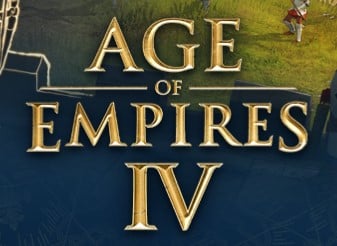
Bottom line: Age of Empires 4 builds greatly on the series' reputation that began in 1997. If you're a fan of RTS games, world history, or both, this should be an easy recommendation. With dozens of hours of campaign play, eight unique civilizations, hours of live docu-style video segments, and a ton of maps for skirmishes, there's no shortage of well-polished content to enjoy. Get it on its own or enjoy it through a subscription to Xbox Game Pass for PC.
Pros
- A highly polished experience with few bugs or glitches
- Some of the best sound design I've heard
- Live docu-style video segments are brilliant
- Lengthy, absorbing campaign makes history exciting
- 17 skirmish maps, 8 unique civilizations at launch
Cons
- Stuttering during auto and manual saves
- A few minor animation bugs
- Ranked play and UGC tools not included at launch
Disclaimer: This review was made possible by a review code provided by Xbox Game Studios. The company did not see the contents of the review before publishing.
Age of Empires 4: Visuals and sound
There was a lot of hoopla surrounding Age 4's visual presentation leading up to the release, so I'd like to tackle this section first. I wrote an editorial reminding players that it would be primarily gameplay that makes or breaks Age of Empires 4, but that doesn't mean the game can't excel in the visual department. Some of the main complaints I saw were about unit and building scaling in early versions of the game that we were able to test.
| Category | Age of Empires 4 |
|---|---|
| Title | Age of Empires 4 |
| Developers | World's Edge Relic Entertainment |
| Publisher | Xbox Game Studios |
| Genre | Real-time strategy |
| Minimum Requirements | Windows 10 Core i5-6300U or Ryzen 5 2400G 8GB RAM Intel HD 520 or AMD Vega 11 |
| Game Size | Approx. 50GB |
| Play Time | Campaign: 20 to 30 hours |
| Players | Up to 8 in multiplayer |
| Launch Price | $60 |
I've no doubt not yet seen every unit and building in the game, but these issues seem to have been handled. Keeps and fortresses tower above towns, villagers look small next to armor-clad military units, and weapons are at an appropriate size to be noticeable but not overbearing. The game is not going for a hyper-realistic look, and that's OK when it attempts to run on such a wide range of hardware. Nearly everything is clearly identifiable at a glance, with units defined well even in the ruckus of battle.
Map landscapes — the backdrop for your matches and campaign missions — are gorgeous. Forests vary in color and type, trees and grass sway lightly in the breeze, sea water color grades naturally toward shore, and unseen clouds passing in front of the sun drape shadows across the plains. There are also plenty of accoutrements that pop up when you build certain buildings.
All the latest news, reviews, and guides for Windows and Xbox diehards.
For example, building a house in an open area will have a small garden and fence appear next to it, adding to the sense that your city is a living organism. Roads also appear automatically between well-traveled areas, though they don't provide a movement bonus. These extras don't affect the game and can be built over if you're pressed for space. A lighted grid that appears when you want to build helps identify what space is open, so you're never really having to guess where to place your next building.
The game ships with 17 different skirmish maps, each with eight different biomes that change the look of the map. Want to play nothing but Dry Arabia but don't want to see the pale palette anymore? Switch to a different biome for a few matches.
Architectural art design is also a strong point. I love the appearance of common buildings across civilizations; they're easy to identify but fit in with the rest of the civ. Unique landmarks are fun to watch as they're built, with scaffolding and virtual workers rising out of the ground. This is where the architecture really gets unique. One thing that stood out to me was how similar the keep looks across civilizations. A bit more variety there could go a long way.
While the vast majority of animations I've seen are fluid, there are still some areas for improvement. One thing that stood out to me immediately was infantry units building siege. Instead of swapping spears or swords for hammers, units would just sort of crowd around a battering ram foundation and point their weapons at it until it was built. If I tasked more units than could fit along the foundation's edge, the rest would spin restlessly until the building was completed. It looks odd, and betrays the attention to detail in other areas of the game.
Arrow animations (and sizing) were another sticking point for many people who saw an early build of the game. While size has been addressed — arrows and bolts are more distinguishable from one another and don't look like spears being tossed — though, the animation is still a bit wonky when zoomed in. In the heat of battle it's not noticeable, but a single archer's timing can be a bit off. At least the arrows release from the bow instead of the soldier's feet now.
The HUD is informative, straightforward, and accessible with hotkeys that are displayed in a discrete manner next to the buttons they represent. You don't have to pause the game and go check your key bindings every five minutes until you memorize them. I would like the ability to increase the minimap size, as I found myself often squinting up close to the screen to see if I'd discovered any stone deposits elsewhere on the map. Having the ability to adjust map size would be a nice addition.
Nevertheless, red circles that alert you to a fight are clear to see on the minimap, which helps move your attention appropriately. The ability to hit Spacebar to take you to the most recent alert is also a nice addition that keeps players from wondering where exactly they need to be.
There are some moments where the HUD can be a bit overbearing, especially if you're playing with tutorial popups enabled. Bubbles above units on the map will suddenly appear, blocking whatever is behind them. And in the campaign, I noticed a large opaque pop up here and there, usually over a mission objective. The popups did occasionally get in the way of targeting specific units. Turning these transparent when centered on the screen would take care of this issue. Missions objectives are also constantly displayed in the top-left corner of the screen, seemingly without a way to hide them. I know what I need to do; let me reclaim that screen space.
I wasn't far into the game when I realized Age 4's sound design is something special. I was tracking my army as it moved across the English countryside, over stone bridges, through fields and forests, and into a city. The sound of horses, infantry, siege engines, and all the associated weapons and armor blended together into a harmony that I had to stop and appreciate. Instead of following through immediately on my campaign objective, I took time to move the army back and forth across terrain just to hear all the sounds.
After more than 20 hours of playtime so far, I'm still thoroughly enjoying the audio blend despite many repeated sounds.
The same attention to audio detail presents itself throughout the game. The tear of trees being felled, the thud of a builder's hammer on a foundation, or the crash of a stone gate falling, only to be rushed by a screaming horde of soldiers; it's all realistic to the point where I can't imagine how much time went into real-world audio capture.
Age of Empires games present a lot of repeated sounds over the course of a campaign mission or a skirmish match. Each time you select a unit or a building an audio cue plays. For example, this aids a fast-moving player to recognize that they've selected the Town Center as they mash the Q button to produce more villagers. As another example, each time you select a villager or soldier they'll have something to say. If not done properly, this can become overbearing over the course of a play session.
Unlike previous Age games where unit sound cues are fairly static throughout the game, Age 4 takes things to another level by changing language to reflect the approximate time period. For the English and the French (two languages I know), I noticed that units speak increasingly modern versions of the languages as you move through ages. It's such a subtle touch but it adds a lot to the historic feel.
Zooming, panning, and rotating the camera changes sound accordingly, and whether you're listening through external speakers or headphones you're going to love what you hear. I found myself getting up close to battles just to hear swords crashing against armor and shield, screams of pain from felled soldiers, and the violent moan of siege engines as they make waste of stone walls. I might be a monster.
Despite some hiccups with the HUD and with certain lacking or unpolished animations, Age of Empires 4 presents itself visually and audibly at an impressive caliber. You might not agree with all of the graphical decisions — some are still going to find the game a bit too cartoonish — but I'm convinced it could look a lot worse and still be a success thanks to its solid gameplay.
Age of Empires 4: General gameplay
Age of Empires 4 is all about moving your civilization of choice through the Dark Age, Feudal Age, Castle Age, and Imperial Age, all while balancing economy and military as you try to defeat your opponent. While the campaign has set mission objectives and carefully crafted maps, jumping into a skirmish — against AI or human opponents — gives you a procedurally generated blank slate with which to work.
You begin games with some villagers, a Town Center, and a scout, with some discrepancies based on the civ you're playing. It's up to you to task your units with gathering resources, building new structures, attacking the enemy, and defending your domain. Scouts can now herd domesticated animals to your Town Center (with some extra upgrades available for wild animals), while your villagers can build, farm, hunt, fish, chop trees, and mine gold or stone.
A new feature involving areas of influence naturally propels players to create districts. For example, an English mill speeds up the food production from any farm in its range of influence. This extends to military units and buildings. As another example, the Rus have wooden defensive keeps that speed up lumber production for any camps within their vicinity. This applies the other way as well, with certain buildings receiving bonuses if they're placed next to appropriate resources. You'll find that each civilization has some unique take on this, each with its own powerful bonus.
Stealth forests are distinguishable patches of trees that provide cover for your units as you prepare for an ambush or secret attack on the enemy.
To move to the next age, you must assign villagers the task of building a landmark. There are two to choose from in each age, both with a different set of perks that will continue through the rest of the game. These unique landmarks don't just sit idle for the rest of the game; they can be used to produce special units or to boost surrounding units and buildings.
There are three different win conditions possible for regular skirmish matches. You can destroy all of an opponent's landmarks (the buildings used to Age up and the Town Center), you can capture and hold all the map's Sacred Sites, or you can build and defend a Wonder. When setting up a game you can tune victory conditions as you like, and single-player skirmish preset scenarios can all be tweaked.
Held sacred sites generate a steady income of gold, as do any relics you manage to capture and keep at your base. Trade sites scattered randomly around the map are used in tandem with your created trade caravans to generate gold. The combination of sacred sites and trade sites makes for some spicy encounters against enemies who are vying for the same map control.
Combat feels fluid and visceral, no doubt helped by the high-end sound design. Units all have strong and weak counters, and you'll be punished for not paying attention. Sending archers in against cavalry will quickly end in ruin, as will sending cavalry in against spearmen or spearmen in against archers. This triangle of combat is key to the Age series. It runs a bit deeper this time, with certain units receiving bonus abilities. Cavalry have a charge ability, spearmen have a brace ability against cavalry, and so on. This extra micro-management is where veteran players excel, and I hope there's enough to keep the top professionals interested.
Combat feels fluid and visceral, no doubt helped by the high-end sound design.
Stone walls can now be mounted by infantry (a first for the series), and most buildings can no longer be used to create makeshift barricades like in Age 2. Sorry house-wallers, you'll need to mine stone to create a strong defense. Stone towers must be attached to stone walls (with some unique exceptions depending on the civ), and they have upgrades available to help deal with enemy units. Keeps can be upgraded in the same way, as can standalone outposts. Any units on a wall receive less damage, while ranged units can fire further, adding some depth to a defensive strategy.
A new fire mechanic plays a big role in Age 4. Buildings damaged below 25% but left standing by units will get an emblem above that shows a fire; these must be repaired by villagers to prevent them from completely burning down to nothing. Some civilizations even get bonus resources from setting buildings on fire, so expect this to be a popular tactic.
Poor pathfinding in an RTS game is inexcusable. This seems to be a non-issue for Age of Empires 4. Even with massive armies moving through tight spaces, every unit seemed to be able to easily find its way to where I'd clicked. The only issues I saw had to do with units trying to get onto a crowded wall. They can only climb to the top of the wall at a gate, a tower, or a ruined portion, which can lead to some bottlenecks.
Grouped armies of different unit types intelligently line up, with archers at the back and quick horsemen at the front backed up by spearmen. While "micro" — the act of carefully controlling individual units while in battle — is still an enormous part of being successful at higher levels of play, units tasked with a general attack-move order can generally figure out where they need to be.
Pathfinding is intelligent in Age of Empires 4. Your units move where you want them to move without issue, which is a crucial part of any RTS.
You can now click and drag a direction in which you want your units to line up, which works well with set formations you can change on the fly. You can also now group units into multiple control groups simultaneously; this helps you command divisions made up of different types of units, while also letting you select, for example, all archers on the battlefield with one button. There are also smart selection tools you can employ for easier control with just a mouse.
One thing that irks me is a lack of positional flags when assigning units with multiple move points. A scout, for example, will make a ring around your Town Center if you assign a bunch of move commands with shift-click, but there's no visual representation. Another little rub is dragging to select units with a mouse. If you touch the edge of the screen with a cursor, the camera moves and brings the box you're created with it. This results in certain units being omitted from selection.
Naval warfare seems to be something that players either love or hate. I played a couple of skirmish matches with a focus on water to get a feel for it. It's quite similar to Age of Empires 2, with fishing ships and a variety of military ships to play around with. A couple of neat additions are the ability for fishing ships to repair military ships, as well as broadside attacks from the larger ships. It also seems like deep-sea fishing spots repopulate after some time, which means you don't end up at a late-Imperial position where you're scrambling to make farms or replenish fishing traps.
One complaint here, after waging some naval battles with Delhi Sultanate, is that ships sort of look the same. I understand cultures had a certain method of shipbuilding, but a bit of extra flair to help differentiate at a glance would be appreciated, especially when fishing ships are grouped up with warships for repairs. Age of Empires 4 isn't going to revolutionize naval warfare in an RTS game, but it seems to be working without issue.
The multiplayer portion of the game is fairly limited with pre-release access, so I can't speak for now on large-scale network capabilities and any issues that might arise at launch. I can say that the multiplayer menus are straightforward and simple to navigate. You can click just once to begin searching for a game against other humans, or you can go in and create your own setup for others to join. Here you're able to set win conditions, map, teams, and the number of total players. Games go up to eight players, with any combination of teams you want.
You can set your online match to be observable. A list is populated in the multiplayer menu, giving you a choice of what you want to watch. You get a nice HUD that shows player resources, as well as controls to change playback speed and change view of the player. You can speed things up to reach live footage, or you can let it play out at the regular speed. I was able to test it once and it worked flawlessly.
Ranked matches, along with scenario editing tools, are not included at launch. I'm guessing the team wants to ensure the game is running properly both on the foundational and network levels before introducing these extra features. It's a shame that we can't jump right in immediately, but the team has stated numerous times that the game will be carefully taken care of for a long time to come. Here's hoping that this isn't an empty promise.
Age of Empires 4: Civilizations
Age of Empires 4 has eight civilizations (with more expected to come), which might not seem like a big enough number for this type of game. However, the individual complexity that's revealed once you start playing them makes up for any worries about the number. Civilizations range from easy to advanced, with a definite leap in difficulty while playing. The English, for example, play a lot like the Britons from Age 2. Then there's something like Delhi Sultanate or Mongols which play unlike anything else.
The strategic depth and variance between Age of Empires 4's unique civilizations is still hard to grasp despite many hours played. This is a game that I will be learning for a long time.
I'm still learning the intricacies of each civilization, growing stronger as a player as I come to understand how the unique bonuses and playstyles work. It's fulfilling to discover a new strategy, implement it, and see it succeed. Instead of just being the fastest with a mouse (which does still make a huge difference) and getting a win, it feels like understanding a civ's strengths and weaknesses plays a much larger role in Age 4.
Each civilization has a set of unique bonuses that changes the way they play. A bunch of them are map dependent, adding even more depth. The Delhi Sultanate's infantry units being able to construct defenses reminds me a bit of the Norse from Age of Mythology, while the Mongols' ability to pack up and move everything at any time is sort of like the Terran's lift off ability in StarCraft. Each time I play a skirmish match with a civ I feel like I'm discovering something I didn't see the last time; this will abate over time, but the metagame possibilities seem to be plentiful.
Age of Empires 4: Campaign
Age of Empires 4 is made up of four distinct campaigns with a total of 35 missions spread throughout. I first tackled the entirety of The Normans campaign — spanning about 150 years and covering William the Conqueror and his heirs — before moving on to sample the majority of missions in The Hundred Years War, The Mongol Empire, and The Rise of Moscow campaigns.
There are about 25 to 35 hours of gameplay in just these campaigns depending on the difficulty level you choose. There's a story mode that essentially boils gameplay down to an interactive romp through history, all the way to hard mode where veteran RTS players will feel challenged. You can change the difficulty as you please.
Pacing is spot-on throughout the missions. You always have something to do, and you're not toiling for long before getting back into a fight. I played through on intermediate difficulty, and it seemed like the game was well-tailored to this setting. There's a definite difficulty climb as you move toward wrapping up each campaign, and there were several missions where I realized that I'd taken the wrong approach. Autosave came to my rescue, allowing me to back up a few minutes and change a crucial decision.
You're going to learn A LOT about the civilizations included in Age of Empires 4.
The campaign's varied missions, smooth voiceover work, and gorgeous map presentation is a lot on its own, but the developers took things to a whole new level with "Hands on History" and "Path of History" video segments. These videos, produced by award-winning Lion TV studio and Relic Entertainment, take real-world modern footage and overlay it with CGI to give an idea of what landscapes looked like in, say, 1066.
Castles still standing today are shown with soldiers manning the ramparts, rivers still flowing today are shown with cavalry fighting on the banks, and stone walls that have since fallen are digitally made whole again. This is all mixed with top-notch narration, delivering a wholly satisfying experience. Moving from the live footage mixed with CGI to standard gameplay feels natural and really gets you involved in what's about to happen.
Hands on History segments are unlocked upon completion of most missions. These focus more on a specific subject related to the mission you just played, and they're presented in a sort of documentary style with experts and hosts. For example, the first mission in The Mongol Empire campaign involves huge, fast-moving armies. The Hands on History video segment you unlock is about Mongol drums and signal arrows, which were used to convey messages to Mongol armies.
Each of these videos is a few minutes long, and all are absolutely worth watching. It's clear that this is an integral part of the game that matches the level of polish seen everywhere else. I don't know any other game that has focused so heavily on getting history right, and I will definitely finish the rest of the campaign missions if only to unlock the outstanding mini documentaries. I'm too much of a boor to go through these with a fine-tooth comb to find any historical inaccuracies, but it's clear the team was acutely focused on presenting these cultures in an uplifting manner.
On top of all this, your user profile gains experience as you play the game. Civilization masteries are sets of objectives that can be completed no matter how you're playing, and there are also daily quests for a bit of variety. Completing these grants you XP, unlocking new content for your profile like coats of arms, town monuments, and more.
Age of Empires 4: Should you play it?
Age of Empires 4 lives up to its celebrated name. It's a worthy addition to the series and to the RTS genre as a whole.
Age of Empires 4 has not reinvented the RTS genre. If that's what you were looking for, you might be disappointed. At its core, it feels a lot like Age of Empires 2, albeit with new graphics, sound, technologies, perks, and strategies. The developers were clear about their intention to create a true successor to Age of Empires 2, and in that regard, they've succeeded.
My main impression, in a time when so many high-profile games are rushed out with missing features or tons of bugs, is that Age of Empires 4 feels like a finished game. And that's despite ranked play and user-generated content (UGC) tools being saved for a large update expected Spring 2022. Age of Empires 4 runs well, even on a mid-range gaming laptop with settings turned up. The game is polished, to the point where I've noticed only maybe two or three minor bugs in my playtime that is approaching 25 hours. I saw one crash on an Intel/NVIDIA system, with no crashes on a full AMD system. Be sure to check out our best gaming laptops collection if you're in need of some new hardware.
Accessibility options, like color filters, remappable key bindings, strong contrast for menus, text scaling, and more help get people comfortably into the game. And the developers have stated that there's a roadmap being released shortly after launch that will keep us informed about what's to come in the near future. It seems like the game is going to be supported for a long time, which I really hope is held up.
The best part of Age 4 for me is the campaign. Its Hands on History and Path of History segments are incredible, both in knowledge conveyed and production quality. These aren't something tacked on; they're an integral part of the full experience. With somewhere around 30 hours of high-quality campaign content, you're going to get a lot of your money's worth in this section alone. And the eight unique launch civilizations mixed with 17 skirmish maps is making my head spin with possible strategies to unleash on a full multiplayer pool.
If you're not a fan of the way Age 2 plays, Age 4 likely won't be in your wheelhouse either. But if you enjoyed previous games in the series, this should be no exception. Age of Empires 4 isn't the revolution some of you were hoping for, but I've had an absolute blast playing the game. I can't wait to see you out there on the multiplayer battlefield. Check out our guide on the Age of Empires 4 launch time to be sure you don't miss out on the release.

Launching October 28 on PC.
Bottom line: Age of Empires 4 hasn't reinvented the RTS genre, but it has perfected many aspects. The campaign is absorbing, the multiplayer is competitive, and the visuals and audio are a near-perfect fit. If you're a fan of the Age of Empires series, this is an easy recommendation.

Cale Hunt brings to Windows Central more than nine years of experience writing about laptops, PCs, accessories, games, and beyond. If it runs Windows or in some way complements the hardware, there’s a good chance he knows about it, has written about it, or is already busy testing it.
